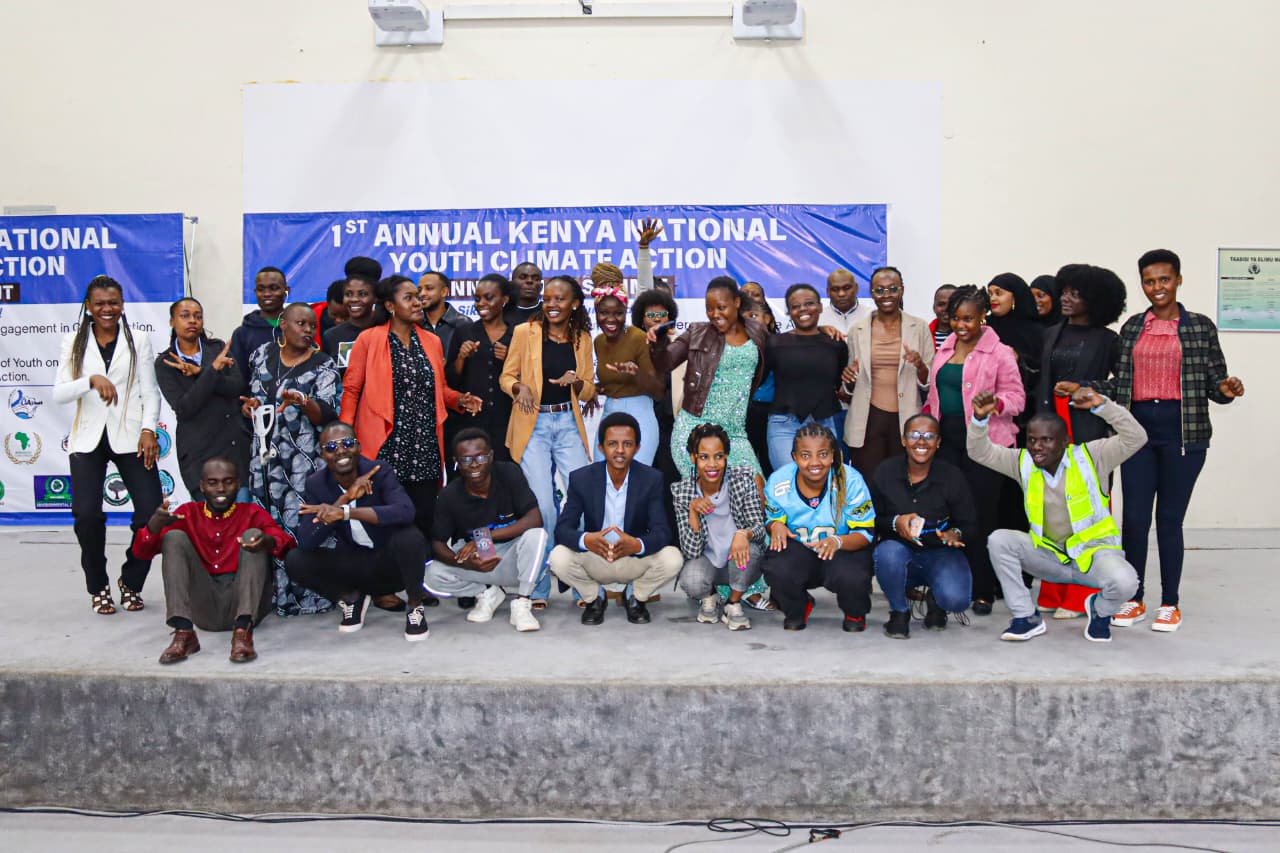+254797 813499

Posted by OAY Kenya on 01-Sep-2025
On 7–8 August 2025, the grounds of the Kenya Institute of Special Education (KISE) buzzed with youthful energy, conviction, and urgency. Over 200 young people drawn from across the country gathered for a first-of-its-kind event: the Kenya National Youth Climate Action Summit.
The two-day gathering, organized by the Organization of African Youth (OAY) in partnership with WeWorld, Bernfonden, CRAWN Trust and funded by the European Union (EU) under the Sikiliza Sauti Yetu (SSY) program, was more than a conference. It was a call to action, a space where young Kenyans insisted that climate change is not only about science and policies—it is about their lives, their jobs, and their future.
The opening keynote from the Permanent Secretary for Trade Pamela Ombam, set the tone:
“Environmental protection is equal to social protection. Climate change is not a distant threat—it is here, affecting health, jobs, and peace.”
She acknowledged that government inaction and greed had worsened the crisis but affirmed that youth, as Kenya’s largest demographic, could be the change-makers.
The National Youth Council (NYC) showcased its KIJANI program, which supports the government’s ambition of planting 15 billion trees by 2032. But trees were only half the story.
KIJANI links reforestation with youth employment by promoting seed entrepreneurship and green jobs.
“It’s not just about planting trees,” NYC explained, “it’s about planting opportunities.”
This emphasis on linking climate action with livelihoods resonated deeply, especially in a country where youth unemployment remains one of the biggest challenges.
Panel sessions and case studies revealed how young people are already tackling climate issues in bold, practical ways.
Ubuntu CBO demonstrated how Black Soldier Fly farming can transform food waste into livestock feed and organic fertilizer. Their slogan “Taka ni Doh!” [Waste is only waste if you waste it] captured the spirit of circular economy.
MuemAction showed the power of storytelling and digital literacy. From training young people to fight misinformation online to hosting “LIVErary” sessions where survivors of climate disasters shared their stories, they highlighted that climate action is not just technical—it is also emotional, cultural, and human.
Discussions on land and waste management exposed the harsh realities of urban youth living in informal settlements where poor governance leaves them most vulnerable to floods, pollution, and displacement.
Closing the summit, a representative from the Permanent Secretary for Labour connected climate action to the future of work. He unveiled the National Strategy on Green Skills and Jobs (2025–2030), which aims to integrate environmental sustainability into education and open new job pathways in renewable energy, waste management, eco-tourism, and sustainable agriculture.
“The green transition is about creating opportunities for young people, not leaving them behind. Let us turn these commitments into action, networks into partnerships, and ideas into impact.”
For many youth in the audience, this was a sign of hope—that climate action could also mean economic empowerment.
The summit culminated in the launch of the Youth Declaration on Climate Action, a powerful statement handed over to the Ministry of Labour. It demanded:
Youth representation in all climate governance structures.
Dedicated financing for youth-led climate solutions.
Integration of climate education into schools and vocational training.
Clear accountability mechanisms to ensure promises translate into measurable action.
Crucially, the declaration did not just call on government and partners to act; it also challenged youth themselves to take ownership, monitor progress, and innovate solutions.
While celebrating progress—like Kenya’s Climate Change Act (2024)—delegates also pointed out gaps. Only 17 of 47 counties have climate action plans, leaving most local communities without clear roadmaps. Financing remains out of reach for many youth-led projects. And without intentional inclusion, children, women, and persons with disabilities risk being left behind.
Still, the mood was determined, not despairing. As one delegate declared:
“We are not just demanding space—we are building it ourselves. Climate action is youth action.”
This first national youth climate summit was not just symbolic. It created a platform where voices from grassroots communities sat at the same table as government officials. It amplified youth innovations already happening on the ground. And it produced a Youth Declaration that can guide future climate policies.
The challenge now is follow-through. Will the declaration shape government budgets and county plans? Will donors and the private sector align their investments with youth priorities? And will young people continue organizing beyond the summit halls?
The 1st Annual Kenya National Youth Climate Action Summit has laid the foundation for a new kind of movement—one where climate action is not left to scientists or politicians alone but is owned by a generation determined to protect its future.
By Lynet Okumu
0 Comments